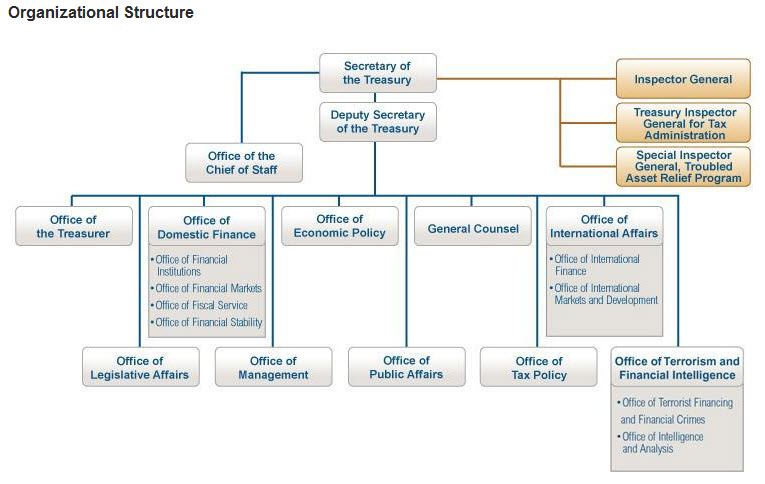United States. Department of the Treasury
Enlarge text Shrink text- MWA/NAIP files(hdg.: United States. Dept. of the Treasury; note: established 9-2-1789; preceded by Board of Treasury 1776-89)
- Statistika urovni︠a︡ zhizni naselenii︠a︡ Rossii, 1998:t.p. (The U.S. Department of the Treasury. Office of Technical Assistance) p. 8 (Ministerstva finansov (Kaznacheĭstva ) SShA po okazanii︠u︡ tekhnicheskoĭ pomoshchi Rossii)
- U.S. income tax treaties, 1999:t.p. (Department of Treasury)
The Department of the Treasury (USDT) is the national treasury and finance department of the federal government of the United States, where it serves as an executive department. The department oversees the Bureau of Engraving and Printing and the U.S. Mint. These two agencies are responsible for printing all paper currency and minting coins, while the treasury executes currency circulation in the domestic fiscal system. It collects all federal taxes through the Internal Revenue Service; manages U.S. government debt instruments; licenses and supervises banks and thrift institutions; and advises the legislative and executive branches on matters of fiscal policy. The department is administered by the secretary of the treasury, who is a member of the Cabinet. The treasurer of the United States has limited statutory duties, but advises the Secretary on various matters such as coinage and currency production. Signatures of both officials appear on all Federal Reserve notes. The department was established by an Act of Congress in 1789 to manage government revenue. The first secretary of the treasury was Alexander Hamilton, who was sworn into office on September 11, 1789. Hamilton was appointed by President George Washington on the recommendation of Robert Morris, Washington's first choice for the position, who had declined the appointment. Hamilton established the nation's early financial system and for several years was a major presence in Washington's administration. The department is customarily referred to as "Treasury", solely, without any preceding article – a transitional remnant from British to American English. Hamilton's portrait appears on the obverse of the ten-dollar bill, while the Treasury Building in Washington, D.C. is depicted on the reverse.
Read more on Wikipedia >
 Governmenal body
Governmenal body





